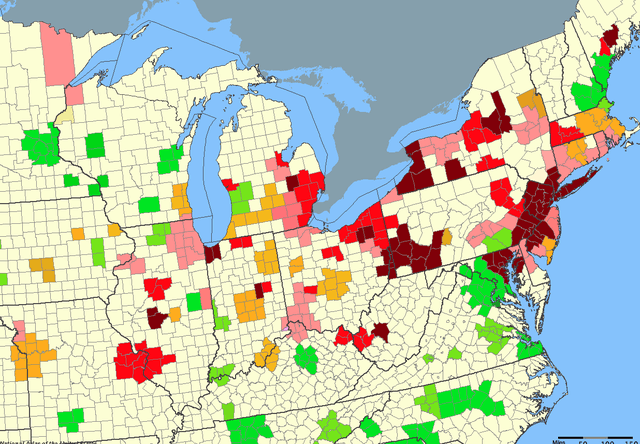New technology and dying industries once made the Rust Belt yesterday’s news, draining some of its Northeast and Midwest states of population and hope.
Check out our H2 hedge fund letters here.

“Natural gas is a game-changer for this region,” says Greg Kozera, director of marketing for Shale Crescent USA, a non-profit, non-political group of business and community leaders from Ohio and West Virginia. “Why is the Rust Belt coming back? Cheap natural gas and natural gas liquids, and what makes it all come together is transportation accessibility; the area is close to market. This region is within a day’s drive to over half the U.S. markets. Right here, you can drill the wells and produce the liquids that make the products.
Kozera details three ways the Rust Belt can be impacted economically through the value and potential of its natural resources:
- Natural gas. The Rust Belt is home to the Marcellus Shale, the largest natural gas field in the United States. It extends from New York to Pennsylvania, West Virginia and Ohio, and includes smaller areas of Maryland, Kentucky, Tennessee and Virginia. Another significant reservoir of natural gas, Utica Shale, stretches through several of the same states. Hydraulic fracturing technology in recent years has made the gas accessible. “Thanks to American ingenuity and technology, this area in less than 10 years has become a world leader again,” Kozera says. “These fields are massive and the possibilities are huge.” Industry publications project that 35 percent of the nation’s natural gas in 2020 will be produced from the Marcellus/Utica region.
- Manufacturing. There are many ways to monetize an abundance of natural gas and expand a region’s economy, Kozera says. Large natural gas reserves and their liquids – ethane, propane, butane, isobutene and pentane – are building blocks for petrochemicals and make the Rust Belt potentially prime turf for manufacturing plants that make products from petrochemicals. A wide range of products, from household to agriculture, medicine, and food packaging are made from petrochemicals. “It makes more sense to manufacture petrochemicals here than it does in many other places like the Gulf Coast, because the feed stocks are here,” Kozera says.
- Jobs creation. Housing valuable and versatile natural resources and utilizing them in myriad ways leads to high-paying jobs and all the economic offshoots. The average petrochemical worker makes $94,000 a year. “To run one plant takes 1,500 to 2,000 people,” Kozera says. “In these petrochemical facilities, you start paying people $50,000 to $100,000 a year, and they start buying stuff. They buy cars, big-screen TVs, they build houses, they have kids who need baby furniture and toys, so much of which are made out of plastic, which comes from petrochemicals. They’re going to restaurants. You feed the economy with a lot of people making good money in career jobs, and that changes everything, impacting every aspect of the region’s economy.”
“If you took eastern Ohio, southwest Pennsylvania, northern West Virginia and drew a circle around that whole area and made that a country, we would be the third largest natural gas producer in the world,” Kozera says. “That’s a big game-changer for the region.”
About Greg Kozera
Greg Kozera, director of marketing for Shale Crescent USA (www.shalecrescentusa.com), is a professional engineer and an environmentalist with more than 35 years of experience in the natural gas and oil industry. He also is the author of the books Just the Fracks Ma’am and Learned Leadership. Kozera is a past president of the Virginia Oil & Gas Association (an all-volunteer organization).





